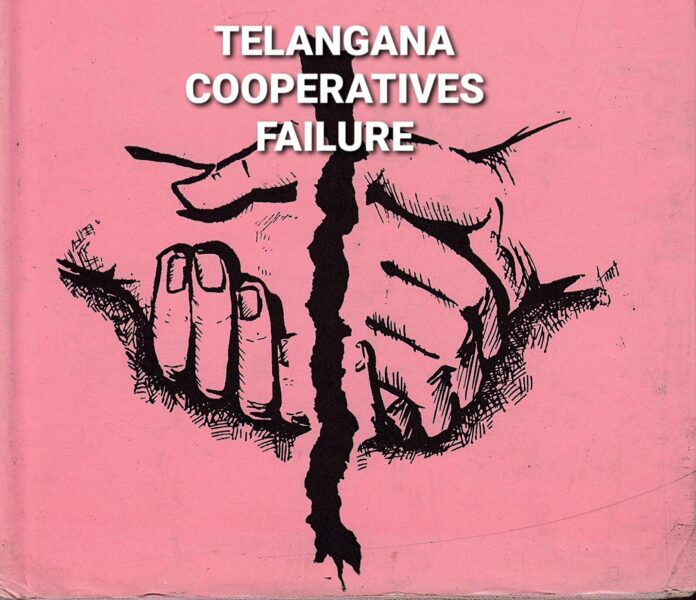The results after decades of agriculture development suggest that farmers continue to be vulnerable to frequent losses that neither the state nor the markets have been able to mitigate.
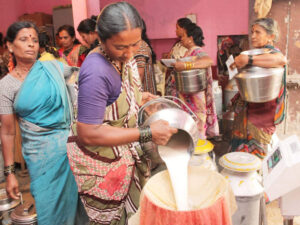 Farmers’ protest against the farm laws and subsequently their rollback by the government reflect the culpability of the market in the mess that the agricultural profession is in today, and is also evidence on whether, and how, the state and market have responded to the agrarian crisis that germinated over six decades ago. The results after decades of agriculture development suggest that farmers continue to be vulnerable to frequent losses that neither the state nor the markets have been able to mitigate.
Farmers’ protest against the farm laws and subsequently their rollback by the government reflect the culpability of the market in the mess that the agricultural profession is in today, and is also evidence on whether, and how, the state and market have responded to the agrarian crisis that germinated over six decades ago. The results after decades of agriculture development suggest that farmers continue to be vulnerable to frequent losses that neither the state nor the markets have been able to mitigate.
In Wealth of Nations, Adam Smith explains that in a market economy, guided by the motive of self-interest, individual decisions collectively determine the economy’s allocation of scarce resources through free markets for the social good. In other words, operation of demand-and-supply forces, through a perfectly competitive market, results in an optimal allocation of resources and a perfect market leads to social efficiency and maximum social welfare.
But in the real world, perfect competition is not so ‘perfect’. Unless demand and supply reflect, respectively, all the benefits and all the costs of producing and consuming a product, the prices determined in perfect competition may not necessarily be ‘perfect’ or ‘right’. If so, perfect competition cannot ensure maximum social welfare or markets fail to achieve social efficiency.
Economists call this ‘market failure’, which means prices fail to provide proper signals to economic agents — consumers and producers — so that the market does not operate in the traditional way. This is also precisely reflected in agriculture markets in India, where neither the producing farmers nor the consuming citizenry is satisfied with the prices.
However, policy interventions, such as taxes, subsidies, wage and price controls, and regulations may also lead to an inefficient allocation of resources, or government failure. Given the tension between the economic costs caused by market failure and costs caused by “government failure”, policymakers attempting to maximise economic value are sometimes faced with a choice between two inefficient outcomes, ie, inefficient market outcomes with or without government interventions.
The real challenge today is about finding the right balance between the market and government and to explore farmers’ own institutions beyond the market and state.
Collective Action, Cooperative Economics
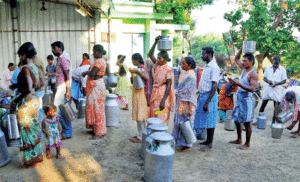 The collective action or cooperative approach on the other hand convincingly challenges the current economic orthodoxy that there are indeed alternatives to state, privatisation, and markets in generating wealth and human wellbeing. Between the individual/market/government, a range of voluntary, collective associations, producer organisations, cooperatives and producer companies can evolve efficient and equitable rules to get the most out of common resources.
The collective action or cooperative approach on the other hand convincingly challenges the current economic orthodoxy that there are indeed alternatives to state, privatisation, and markets in generating wealth and human wellbeing. Between the individual/market/government, a range of voluntary, collective associations, producer organisations, cooperatives and producer companies can evolve efficient and equitable rules to get the most out of common resources.
Agriculture cooperatives with over 400-million-member farmers are responsible for over 50% of agricultural production and marketing in the world.
Today, there is an alternative secure, stable and sustainable model of business owned and controlled by 800 million people worldwide. Agriculture cooperatives with over 400-million-member farmers are responsible for over 50% of agricultural production and marketing in the world. It is a model of business that is not at the mercy of stock markets or corporates because it relies instead on member funds for its value; and is not subject to executive manipulation and greed because it is controlled by local people for local people.
It is a business where the profits are not just distributed to its shareholders but are returned to those who trade with the business, thus keeping the wealth generated by local businesses in the local community for the good of the local environment and families.
This is the cooperative sector of the global economy which employs 100 million people worldwide. It is no coincidence that the world’s most successful and stable economies generally also happen to have the world’s most cooperative economies.
Farmer collectives are, therefore, viewed as an important element in linking smallholders with modern markets as they provide many benefits for this interface. Further, primary producers’ organisations or collectives are being correctly argued to be the only institutions which can protect small farmers from the ill-effects of globalisation or make them participate successfully in modern competitive markets.
Producers’ organisations not only help farmers buy or sell better due to scale benefits but also lower transaction costs for sellers and buyers, besides providing technical help in production and creating social capital. A striking example is The Gujarat Co-operative Milk Marketing Federation with 28 lakh milk producers.
Amul is the largest food brand in India and world’s largest pouched milk brand with an annual turnover of $1,700 million. It transfers 82% of its retail price to farmers.
Cooperative enterprises have shown their ability to withstand crises such as 2008 global recession successfully as they are member-owned and are more risk-averse compared with other financial institutions.
Partners in State’s Growth
December 29 is a memorable day in the promotion of industrial enterprises in Telangana with Amul signing an MoU to set up its largest plant with an investment of Rs 500 crore to process five lakh litres per day in the State. It will provide direct employment to over 500 persons and opportunities to several ancillary industries.
Importantly, Amul will strive to procure the required milk and other raw material from Telangana farmers and the various cooperatives and farmer producer organisations (FPOs) operating in the State.
Mulkanoor Cooperative
 Telangana boasts of cooperative successes such as the Mulkanoor Cooperative Rural Bank and Marketing Society Ltd, which is also a role model in several ways. It has a turnover of over Rs 100 crore. It does not have a single defaulter among its thousands of borrowers, with total lending in a year exceeding Rs 20 crore. Its operations range from dairies to a modern rice mill.
Telangana boasts of cooperative successes such as the Mulkanoor Cooperative Rural Bank and Marketing Society Ltd, which is also a role model in several ways. It has a turnover of over Rs 100 crore. It does not have a single defaulter among its thousands of borrowers, with total lending in a year exceeding Rs 20 crore. Its operations range from dairies to a modern rice mill.
Mulkanoor has one of the largest paddy seed growing and selling operations in the country. It consistently places the second biggest request for paddy foundation seeds to Prof Jayashankar State Agriculture University. Every year, it lifts 40 tonnes of foundation seeds of 13 paddy varieties and produces about ten million tonnes of paddy seeds.
Karimnagar Dairy
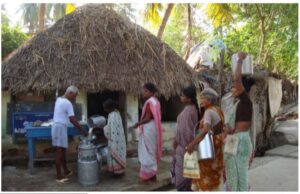 Another cooperative success story is The Karimnagar District Milk Producers Mutually Aided Cooperative Union Limited, known as Karimnagar Dairy, with 70,000 farmers as members. It has achieved a distinction in the Telangana region with procurement of 2 lakh litres per day and sales of 1.7 lakh litres per day. This has been possible through their excellent marketing network, introducing hybrid milch animals, promoting growth of fodder, constant veterinary services apart from highly socially responsible welfare schemes targeted at their members.
Another cooperative success story is The Karimnagar District Milk Producers Mutually Aided Cooperative Union Limited, known as Karimnagar Dairy, with 70,000 farmers as members. It has achieved a distinction in the Telangana region with procurement of 2 lakh litres per day and sales of 1.7 lakh litres per day. This has been possible through their excellent marketing network, introducing hybrid milch animals, promoting growth of fodder, constant veterinary services apart from highly socially responsible welfare schemes targeted at their members.
Cooperative Electric Supply Society
Yet another remarkable cooperative celebrating its 50th anniversary is the Cooperative Electric Supply Society (CESS) in Rajanna Sircilla district. CESS has 2.14 lakh members as consumers in 173 villages and has been practising one of the best supply and service traditions to its customers.
Its record of collecting bills from consumers is as high as 97%. CESS has accumulated cooperative wealth of Rs 30 crore with assets worth Rs 250 crore. Initiated in 1970, it created history by electrifying 100% of its villages apart from supplying power to looms and irrigation in the Siricilla region.
Karimnagar District Central Co-op Bank
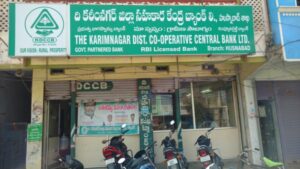 The Karimnagar District Central Cooperative Bank, which is celebrating its centenary this year, was awarded as the number one cooperative central bank in the country by NAFSCOB (National Federation of State Cooperative Banks Ltd) for four consecutive times and adjudged the Best District Central Cooperative Bank in the South zone by Nabard in 2021.
The Karimnagar District Central Cooperative Bank, which is celebrating its centenary this year, was awarded as the number one cooperative central bank in the country by NAFSCOB (National Federation of State Cooperative Banks Ltd) for four consecutive times and adjudged the Best District Central Cooperative Bank in the South zone by Nabard in 2021.
It has to be emphasised that braving lockdown and Covid outbreak, it is the only cooperative bank in Telangana and Andhra Pradesh to earn a gross profit of Rs 51.12 crore during 2020-21. Its business grew 16% at Rs 3,973 crore, including Rs 2,070 crore loans and Rs 1,903 crore deposits, during the period. How is this possible?
Beyond Market and State
Let us remember the 2008 global recession when people world over watched with shock and disbelief as many global financial structures dissolved in panic, and bastions of the investment and banking industry collapsed. They wondered as the world’s political leaders were forced to commit vast amounts of taxpayers’ money to bolster and stabilise banks and stock markets, shaken to the very core by corporate greed and profit-driven mismanagement. The negative implications of this global crisis on enterprises are felt even today.
However, few know that cooperative enterprises have shown their ability to withstand such crises successfully. In fact, according to a UN report, cooperative enterprises such as financial cooperatives were financially quite sound in spite of the global recession; agricultural cooperatives reacted successfully with new marketing options and showed real growth; consumer cooperatives reported an increase in turnover; worker cooperatives sustained growth. What is the secret behind such an astonishing development?
Type of ownership and methods of capitalisation are the two key factors that have created a disparity in the financial positions of corporate credit unions and banks, to the advantage of cooperative savings and credit unions. The reason is that cooperative enterprises are member-owned and are more risk-averse compared with other financial institutions.
They are not driven by profits or shareholder interests and, therefore, do not force people into inappropriate loans. They have, therefore, stayed away from offering riskier sub-prime loans which ruined banks in the US, Europe, etc. They have a different governance structure, which scrutinises the decisions of the central institutions. In this way, they are more aware of the fact that the loan they offer to their members is another member’s money. This direct link of savings and loans, which is not there in corporate banks, acts as a moral constraint.
Importantly, cooperative credit banks are not dependent on capital markets for funding but are funded through member deposits. Therefore, as an alternative to private, corporate enterprises favoured by neoliberal economic policies, there are indeed viable people-centred economic models to combine efficiency and equity, which are member-driven rather than investor-driven.
Perspectives for Cooperation
Despite remarkable success stories, dissemination of the cooperative model of business enterprises in the emerging fields of agriculture, horticulture, fisheries processing up to consumer sector is not up to the mark. It is high time our policymakers realised that it is only through cooperatives a win-win situation of efficiency and equity can be achieved and the fruits of development can be shared by all.
In the wake of globalisation and privatisation efforts all over the world, and particularly in India, policy and law-makers have to seriously discuss concrete initiatives aimed at creating a level playing field for cooperatives that would allow them to compete with investor-oriented firms without giving up their economic, social and cultural orientation.
According to the Union Minister for Cooperation, Amit Shah, the Central government is bringing in a comprehensive cooperative policy to widen the reach of cooperatives at the grassroots level and strengthen the cooperative sector to withstand a competitive environment. As cooperation is a State subject too, he has promised to work together with the States.
However, the announcement that government intends to make Primary Agriculture Cooperatives as FPOs, apart from increasing their number from present the 65,000 to 3 lakh in the next five years is being seen sceptically. This is because just recently the government has vehemently denied the cooperative approach through the three highly controversial farm laws and withdrew them. Currently, the Central government has no viable policy approach on how food security and agriculture marketing policy has to be designed along with the States for the future.
Indeed, the unique initiative of FPOs, which are member-based farmers’ institutions, with the objective of integration of smallholders into the agricultural value chain was taken by the government of India, Nabard over the last 10 years. About 5,000 FPOs were formed of which around 3,200 FPOs are registered as Producer Companies which require not only technical handholding support but also adequate capital and infrastructure facilities, including fair market linkages,for sustaining their business operations.
Cooperating with States
There are three key areas of long-term future interventions to be explored where State and Central governments in close cooperation with FPOs could play a decisive role:
Government should announce MSP for all the crops along with approximate quantities which may be procured. This can be decided by the States instead of the Central government and procured accordingly. Procurement should be done by government agencies, using FPOs/women self-help groups platforms as in Telangana.
A State, district, mandal, or cluster level plan can be developed regarding the food produced and the foods distributed under PDS and use the existing FPOs, women SHGs, PACS and other community organisations to procure and distribute the grains under various food security schemes. The costs will go down significantly, and subsidies and benefits can be passed on directly to producers.
Strengthen FPOs and promote them to procure, process and distribute the grain grown within their region. Already, women SHGs are doing an excellent job in procurement in Telangana. They can become value-addition agencies in processing and expand into consumer retailing or franchising.
Such basic models of “beyond markets and states” are possible in communities with high levels of autonomy and internal trust. This is because unlike market or state it is only collective action and cooperation where efficiency and equity can be combined and the profits arising out of their business are returned to those who trade with the business, thus keeping the wealth generated by local businesses in the local community for the good of the local environment and families. #KhabarLive #hydnews

